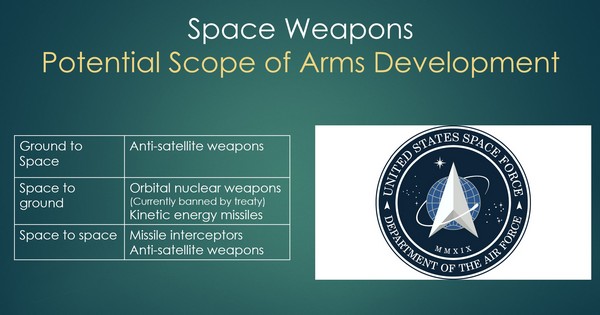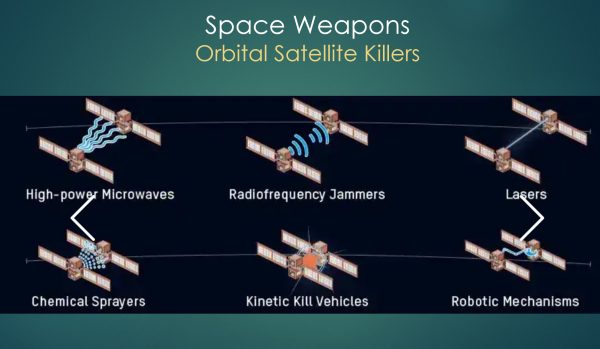The launch of the Sputnik satellite in 1957 was an epochal event in the history of technology. Because this feat was accomplished by the USSR at the height of the cold war, it caused great alarm in the U.S. because of its military implications. Politicians and military leaders feared that nuclear weapons could be placed in Earth orbit, from which they could strike without warning anywhere on earth. Fortunately, the Outer Space Treaty of 1967 prohibited the placement of nuclear weapons and weapons of mass destruction in orbit. Unfortunately, this treaty did not end the movement toward militarization of space.
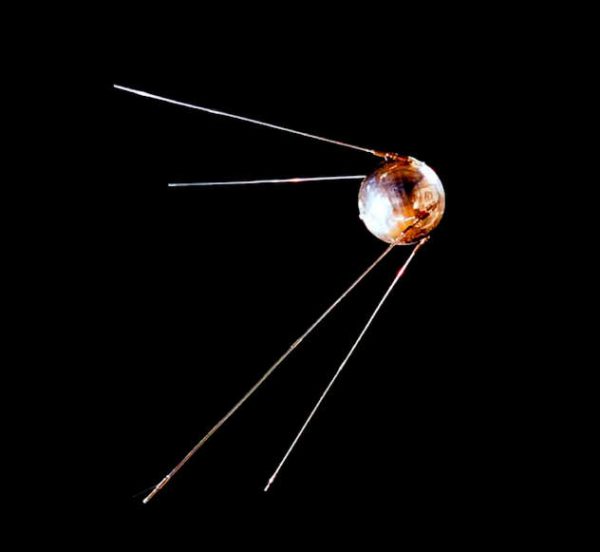
Sputnik 1 – Dawn of an era
Today orbital systems are vital to the military activities of major world powers. Global positioning, communications, and reconnaissance satellites provide invaluable targeting, command and control, and intelligence facilities for military purposes. The U.S., as part of its strategic commitment to “full-spectrum dominance,” is aggressively pursuing the militarization of space. This was demonstrated by the creation in 2019 of the Space Force, whose mission, is to “Secure our Nation’s interests in, from, and to space.” This expansive mission encompasses combat operations in Earth orbit, which would entail defending U.S. satellites from destruction and potentially destroying the satellites of other nations.
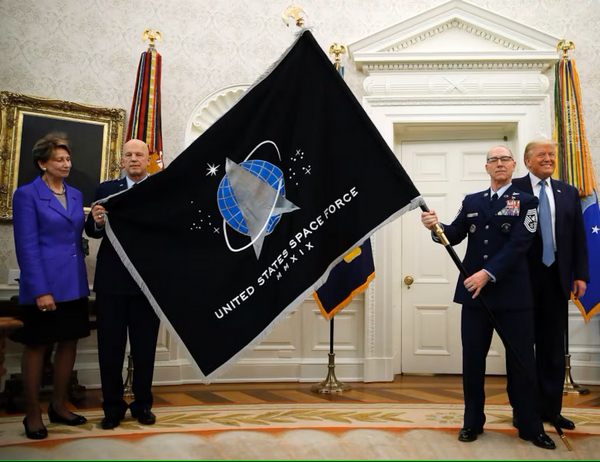
A force for good?
The Space Weapons Pandora’s Box
Although most space weapons development is shrouded in secrecy, these weapons can be grouped in a few categories based on directional characteristics.
I will describe two of the most dangerous areas of development in greater detail: anti-satellite and orbital ground strike weapons.
Satellite Killers
Satellites are potentially high-value military targets. They are relatively fragile and easily located by nations with advanced radar systems. Ground-based satellite interceptors are inefficient compared to orbital systems that can destroy multiple satellites with a single vehicle. This is an important advantage because of the growth of large satellite constellations in low-Earth orbit (LEO) such as Starlink, which already has over 7,000 satellites in orbit and plans to eventually double that number.
The U.S., China, and Russia likely all have classified programs developing orbital anti-satellite weaponry. The secret missions of the U.S. X-37B are suspected to be involved in orbital warfare research. Both Russia and China have similar unmanned space plane projects.

X-37B – Space defender?
Orbital Kinetic Energy Weapons
A small bullet is deadly because of its velocity. The same laws of physics enable a tungsten rod weighing 500 kg dropped from orbit at hypersonic speed to strike the earth with the explosive power of a 1,000 kg conventional bomb. When first conceived by weapons developers, such kinetic energy bombs were called “rods from God.” Russia has already demonstrated the destructiveness of kinetic energy warheads in its Oreshnik short-range tactical ballistic missile, but putting many such weapons in orbit would provide a global strike capability of remarkable power. Such strikes could be launched with no warning and low probability of interception. The language of the Outer Space Treaty does not specifically ban kinetic energy weapons.
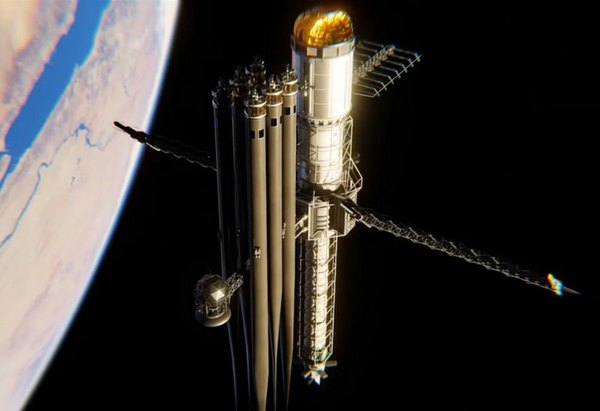
Rods from God
Space Weapons and Strategic Destabilization
Ever since the invention of nuclear weapons in 1945, the world has faced the threat of catastrophic global war. An uneasy peace has been maintained because none of the nuclear-armed nations is confident that it could prevail in a nuclear exchange. Any new technology that promises a big strategic advantage to one nation is dangerously destabilizing because it may result in pre-emptive action by other states. Thus, the threat of an attack on the military satellites of another nation or a kinetic bombardment from orbit could trigger a nuclear war. Accordingly, orbital weapons should be banned to eliminate this destabilizing potential. Moreover, halting arms racing in development of these weapons would result in substantial savings that could be directed to productive uses. Unfortunately, the U.S. has recklessly abandoned a number of arms control treaties in recent years, and there is no guarantee that the Outer Space Treaty will survive pressure from the Military-Industrial Complex to remove all limits to development of space weapons.
Kessler Syndrome
In addition to the danger of strategic destabilization, the deployment of weaponry in orbit raises another alarming concern: the catastrophic pollution of orbital space by a chain reaction of debris collisions resulting from destroyed satellites. This theoretical phenomenon, has been named the Kessler Syndrome, after Donald Kessler, the NASA scientist who investigated it. If an orbital space battle creates large amounts of fragments, these could create a cascading wave of destruction that could render low-Earth orbits unusable, resulting in serious negative economic consequences.
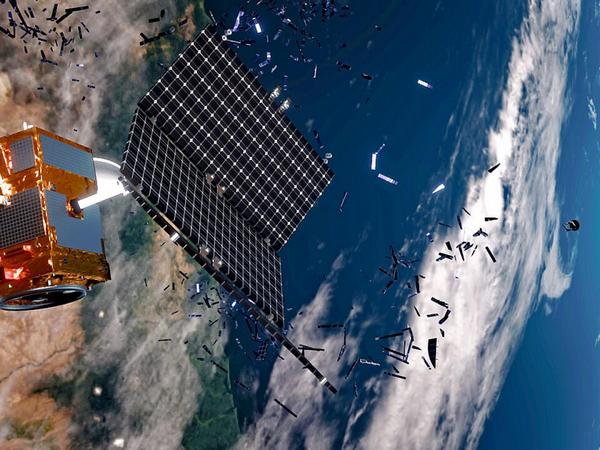
Kessler Syndrome depiction – big trouble in orbit
Rocket Economics and Arms Racing – Enter Starship
Despite the eagerness of military planners to expand the domain of warfare to space, their efforts have been constrained by the high costs of lifting weapons into to Earth orbit. As the table below indicates, the Starship rocket under development by SpaceX reduces this constraint. The lift capacity of Starship, is approximately 150,000 kg, many times greater than earlier rockets. Starship has about 15 times the volume of the Space Shuttle’s pressurized bay and roughly six times the cargo mass capacity. Thus, multiple Starship launches could deploy large numbers of potent orbital weapons.
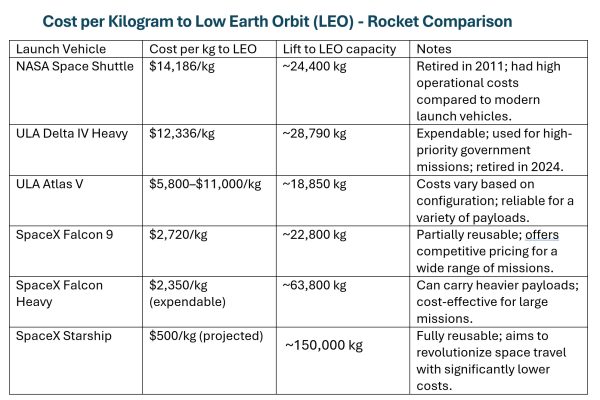
Starship – too big to ignore
Von Braun and Musk
History rhymes, and there is a strange parallel between the careers of two rocket pioneers, Wernher Von Braun and Elon Musk. Both men were captivated by the dream of interplanetary exploration, including sending rockets to Mars.
Von Braun was a rocket and space exploration enthusiast as a teenager, but as a graduate student in physics he became part of the Nazi war machine and led the development of the first ballistic missile, the V-2. This terrifying weapon was built by slave laborers, and thousands of V-2s were launched against England and Western Europe, inflicting substantial death and destruction. Von Braun escaped war crimes prosecution because his skills were valued by the U.S. military, and he became the head of several U.S. rocket programs, ultimately directing the development of the Saturn V moon rocket.
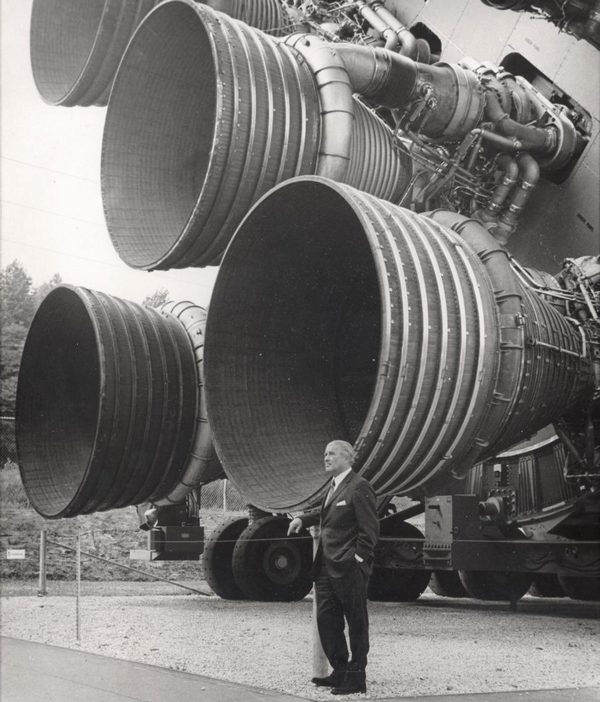
Wernher Von Braun and Saturn V – from the dark side to the moon
Elon Musk’s motivation in developing advanced rockets has also been the dream of interplanetary travel. He has declared his intention to achieve a manned landing on Mars by 2031. His SpaceX company has achieved dramatic advances in rocket technology by cutting production costs and recovering booster rocket stages for reuse. When the huge Starship rocket completes development, it will enable missions to the Moon and Mars, but it will also greatly expand the potential for U.S. militarization of space. SpaceX already does a large amount of business with the federal government. In 2024 SpaceX received about one quarter ($3.7 billion) of its total revenue of $13 billion from federal government contracts. It has contracts for launching defense-related payloads, including a new generation of reconnaissance satellites. This work for the defense sector is likely to grow. It would be a sad echo of Von Braun’s history if Musk were to take the dark path of deploying weaponry in space as a means of furthering his long term goal of enabling interplanetary exploration.

Elon Musk – staying on the bright side?
Conclusion
Militarization of space is a very bad idea. Exploiting rapid advances in rocket technology to deploy weaponry in orbit is economic, environmental, and strategic folly. The costs could rival the enormous investments in ground-based weapons systems, and the resulting increased strategic instability would bring the world ever closer to the precipice of nuclear war. There is a further danger of polluting orbital space with satellite debris, rendering it unusable. Accordingly, it is critically important that Outer Space Treaty of 1967 not be abrogated by the U.S. and that additional treaties banning conventional anti-satellite weapons and orbital strike systems be negotiated and implemented. Without such safeguards, enabling war in space may result in Hell on Earth.


